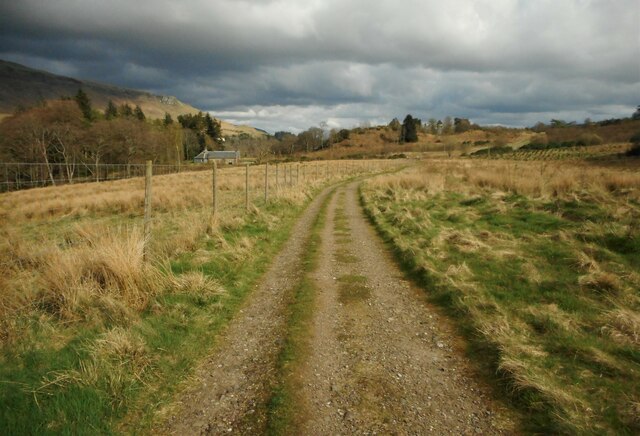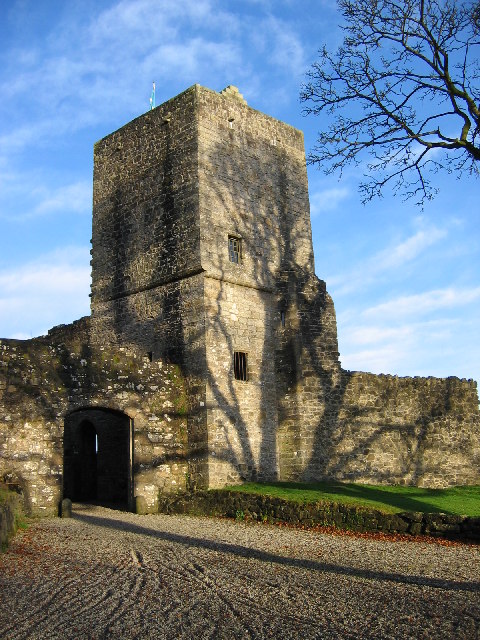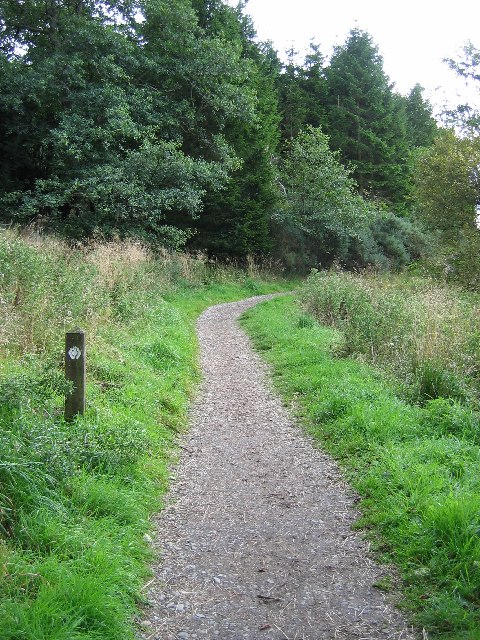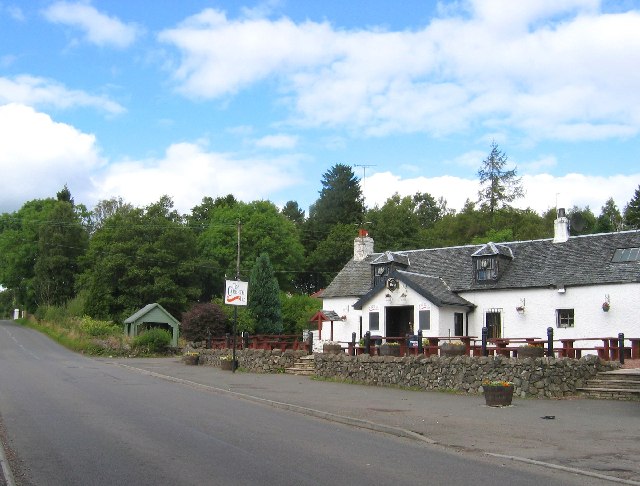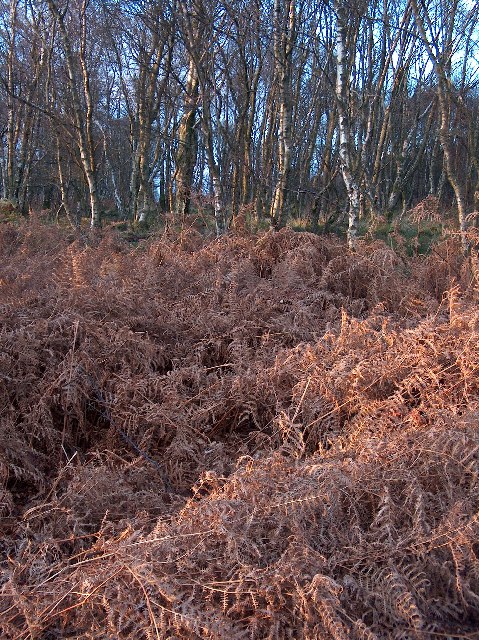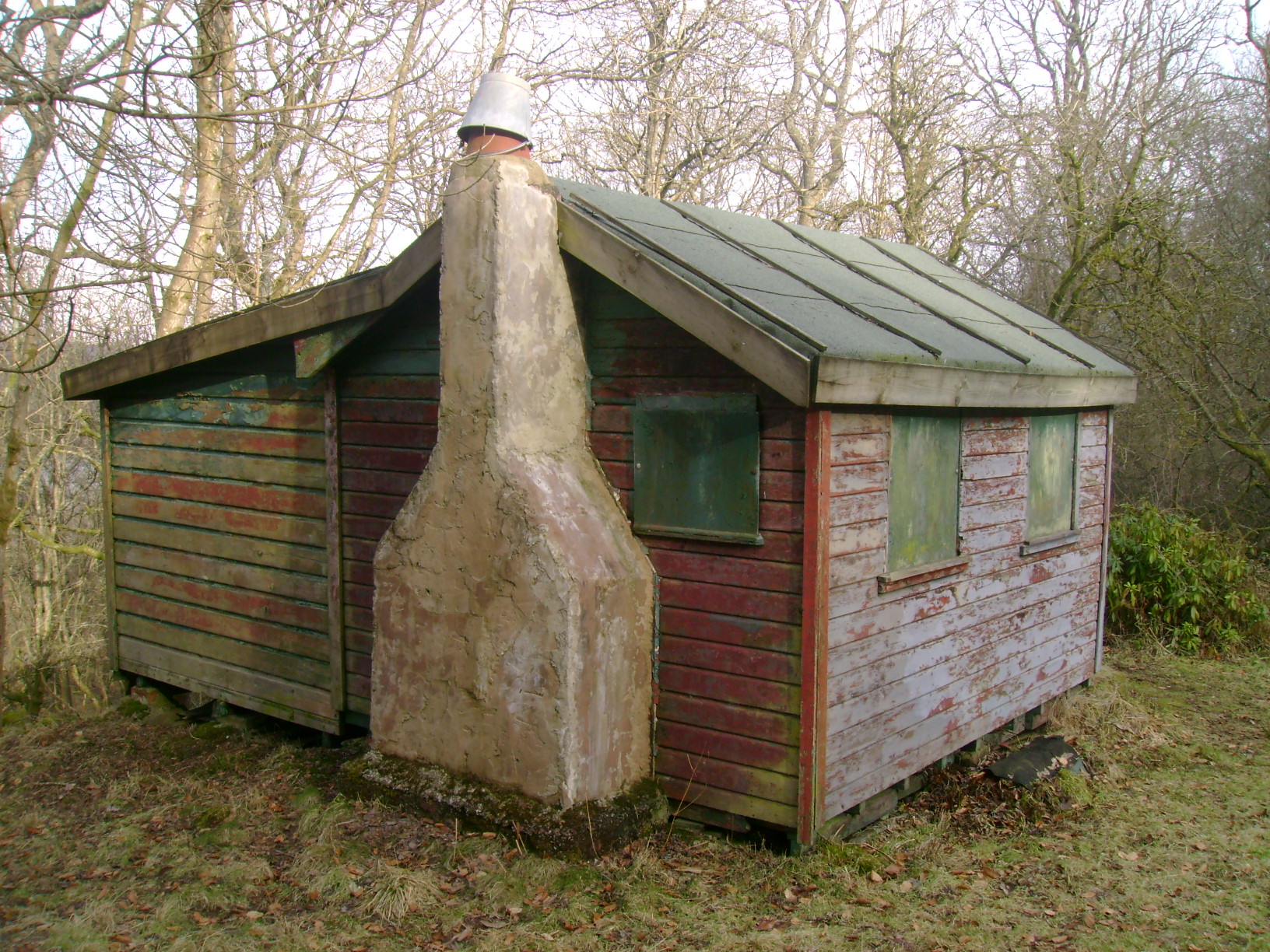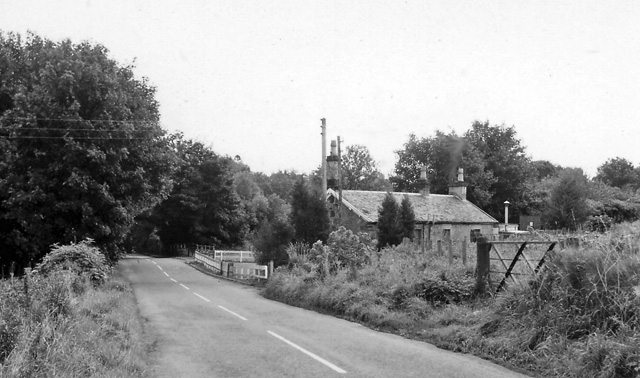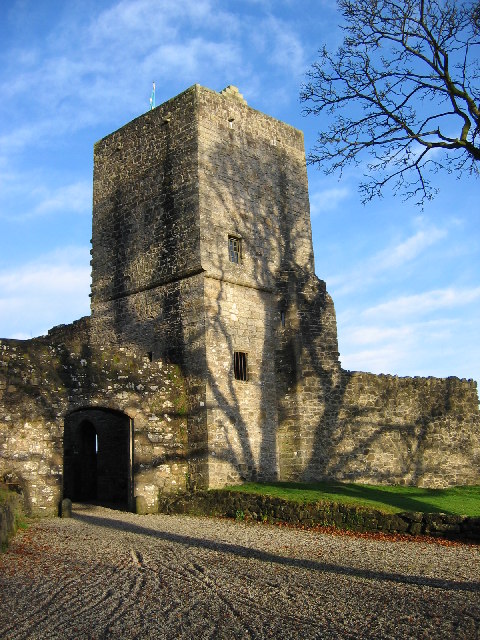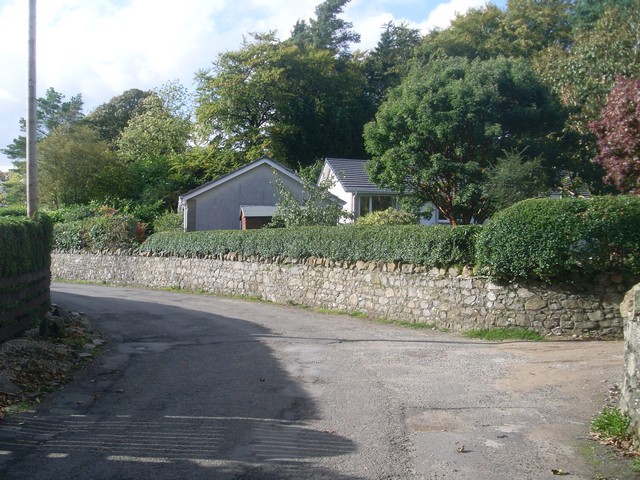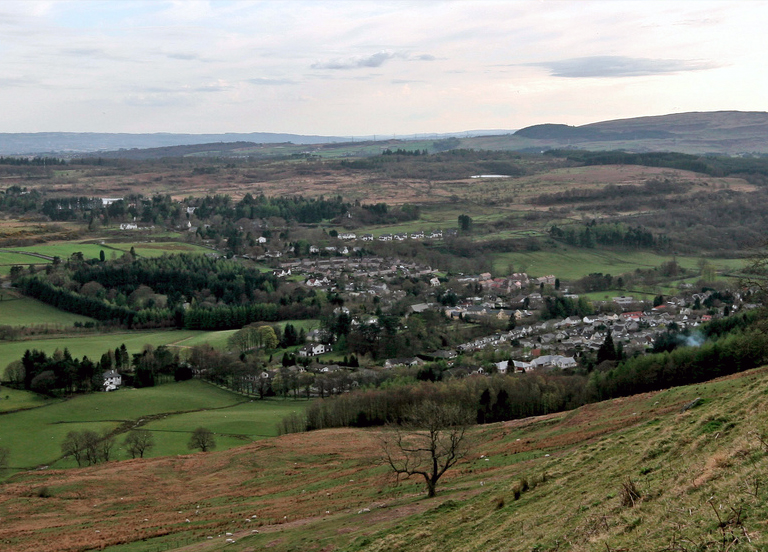Craigallian Loch
Lake, Pool, Pond, Freshwater Marsh in Stirlingshire
Scotland
Craigallian Loch

Craigallian Loch is a picturesque freshwater loch located in Stirlingshire, Scotland. Nestled within the stunning backdrop of the Campsie Fells, it covers an area of approximately 10 hectares. The loch is situated at an elevation of 246 meters above sea level, providing visitors with breathtaking panoramic views of the surrounding countryside.
The loch itself is relatively shallow, with a maximum depth of around 3 meters. It is fed by a number of small streams and springs that flow into it from the surrounding hills, ensuring a constant supply of fresh water. The water is clear and pristine, attracting a variety of wildlife.
The surrounding area of Craigallian Loch is predominantly covered by woodland, creating a serene and tranquil atmosphere. The loch is home to a diverse range of flora and fauna, including various waterfowl, such as ducks and geese, as well as numerous species of fish, such as trout and pike. The lush vegetation around the loch provides a habitat for a wide array of bird species, making it a popular destination for birdwatchers.
A footpath runs along the eastern shore of the loch, allowing visitors to explore the area and enjoy the natural beauty of the surroundings. The loch is a popular spot for recreational activities such as fishing and picnicking, attracting locals and tourists alike.
Overall, Craigallian Loch offers a peaceful retreat from the hustle and bustle of city life, providing a haven for nature lovers and outdoor enthusiasts. Its stunning scenery and abundant wildlife make it a must-visit destination in Stirlingshire.
If you have any feedback on the listing, please let us know in the comments section below.
Craigallian Loch Images
Images are sourced within 2km of 55.974623/-4.3470841 or Grid Reference NS5378. Thanks to Geograph Open Source API. All images are credited.


![The ruins of Arlehaven Other contributors&#039; earlier pictures show the mostly-intact building as well as its ruin: <a href="https://www.geograph.org.uk/photo/80349">NS5380 : Arlehaven</a> / <a href="https://www.geograph.org.uk/photo/996470">NS5380 : Arlehaven on the West Highland Way</a> / <a href="https://www.geograph.org.uk/photo/1640386">NS5380 : Remains of Arlehaven</a>.
On the first-edition OS map (surveyed in 1860), the building was labelled West Arlehaven (in contrast with East Arlehaven at <a href="https://www.geograph.org.uk/gridref/NS54028023">NS54028023</a>); the &quot;West&quot; was later dropped. The second-edition map (revised c.1896) used the names &quot;Harlhame&quot; (for West Arlehaven) and &quot;Arlehaven&quot; (for East Arlehaven).
The forms &quot;Harlhame&quot; and &quot;Arlehaven&quot; each preserve some elements of the older spellings of this place-name; much of what follows is from the book &quot;The Parish of Strathblane&quot; (1886) by John Guthrie Smith.
The area is referred to as Harlhewan in a deed of 1545, which grants certain lands, forfeited by the Earl of Lennox, to the Earl of Montrose (p15). In 1815, part of the lands of Arlehaven were bought by John Guthrie from James Norval/Narwall. Mr Guthrie made various improvements to this and the other lands making up his estate, and he built march dykes around them (pp42-43).
Other names for this particular area: &quot;John Craig of Laggan was grandfather of Archibald Craig, who was tennant of Laggan in 1743, and who removed from Laggan to Meadowhead or Wester Arlehaven in 1775&quot; (p67).
[The Grassom map (1817) of Stirlingshire shows a &quot;Meadowhead&quot;, but on the other side (NE) of the Blane Water. In a similar way, the Grassom map and Roy&#039;s Military Survey (1740s-50s) both include a &quot;Townhead&quot;, but on opposite sides of the river.]
Pages 74-75 give a detailed account of the manner in which various parts of the Arlehaven lands changed hands from the fifteenth century down to Smith&#039;s own day. He notes that &quot;when King James I granted certain lands, as already shown, to his brother-in-law, William Edmonstone, prior to 1434, &#039;Erleleven&#039; was among them; and when King James II, in 1452, erected the same into the Barony of Duntreath, &#039;Arleywin&#039; was included, and down to the present time this part of Arlehaven, a fifty shilling land, has continued to belong to the Edmonstones, with the exception of (1) 11 acres 1 rood and 10 falls which lay into Carbeth, and were in 1817 exchanged with John Guthrie for part of Carbeth, and (2) of &#039;the poffle called Dallinschachan and Boglands thereof, part of the fifty shilling lands of Arlevin&#039;, which were sold by William Edmonstone of Duntreath in 1614, to John and Manasseh Lyle, and bought back again by his descendant, Archibald Edmonstone, the laird in 1717&quot;.
The heading for that section of the book gives the following variations of the name: Arlehaven, Arleywin, Arlevin, Erleleven, Harlhewing, Harlehame, Harlehaven, Harleheavin. The sixth of these is close to the form that appears on the second-edition OS map (see above).
In the present view, the wooded hill on the right is Dumgoyach. The knoll on the left with a lone tree is shown from a distance in <a href="https://www.geograph.org.uk/photo/3995178">NS5380 : Field gate</a>. Between knoll and hill, Ben Lomond can be seen near the centre of the skyline.](https://s2.geograph.org.uk/geophotos/03/99/56/3995614_c58447e0.jpg)



![Site of Arlehaven The ruin shown here <a href="https://www.geograph.org.uk/photo/80349">NS5380 : Arlehaven</a>] has been demolished. Spot the tent.](https://s2.geograph.org.uk/geophotos/06/85/54/6855490_e40ad3b8.jpg)
Craigallian Loch is located at Grid Ref: NS5378 (Lat: 55.974623, Lng: -4.3470841)
Unitary Authority: Stirling
Police Authority: Forth Valley
What 3 Words
///quantity.uttering.gourmet. Near Strathblane, Stirling
Nearby Locations
Related Wikis
Carbeth
Carbeth is a hamlet in Stirlingshire, 2.5 miles (4 km) west of Strathblane and 5.5 miles (9 km) north of Clydebank. Named features include Carbeth Hill...
Mugdock Castle
Mugdock Castle was the stronghold of the Clan Graham from the middle of the 13th century. Its ruins are located in Mugdock Country Park, just west of the...
Blanefield railway station
Blanefield railway station served the village of Blanefield, Stirling, Scotland from 1867 to 1959 on the Blane Valley Railway. == History == The station...
Mugdock Country Park
Mugdock Country Park is a country park and historical site located partly in East Dunbartonshire and partly in Stirling, in the former county of Stirlingshire...
Mugdock
Mugdock is a hamlet in Stirlingshire, Scotland. It lies to the south of the village of Strathblane, and was in the civil parish. In the past the hamlet...
Blanefield
Blanefield is a settlement in Scotland contiguous with Strathblane's northwestern fringe. To the west is the volcanic plug Dumgoyne, Glengoyne Distillery...
Strathblane
Strathblane (Scottish Gaelic: Strath Bhlàthain, pronounced [s̪t̪ɾahˈvl̪ˠaː.ɪɲ]) is a village and parish in the registration county of Stirlingshire, situated...
Strathblane railway station
Strathblane railway station served the village of Strathblane, Stirling, Scotland from 1867 to 1951 on the Blane Valley Railway. == History == The station...
Nearby Amenities
Located within 500m of 55.974623,-4.3470841Have you been to Craigallian Loch?
Leave your review of Craigallian Loch below (or comments, questions and feedback).




